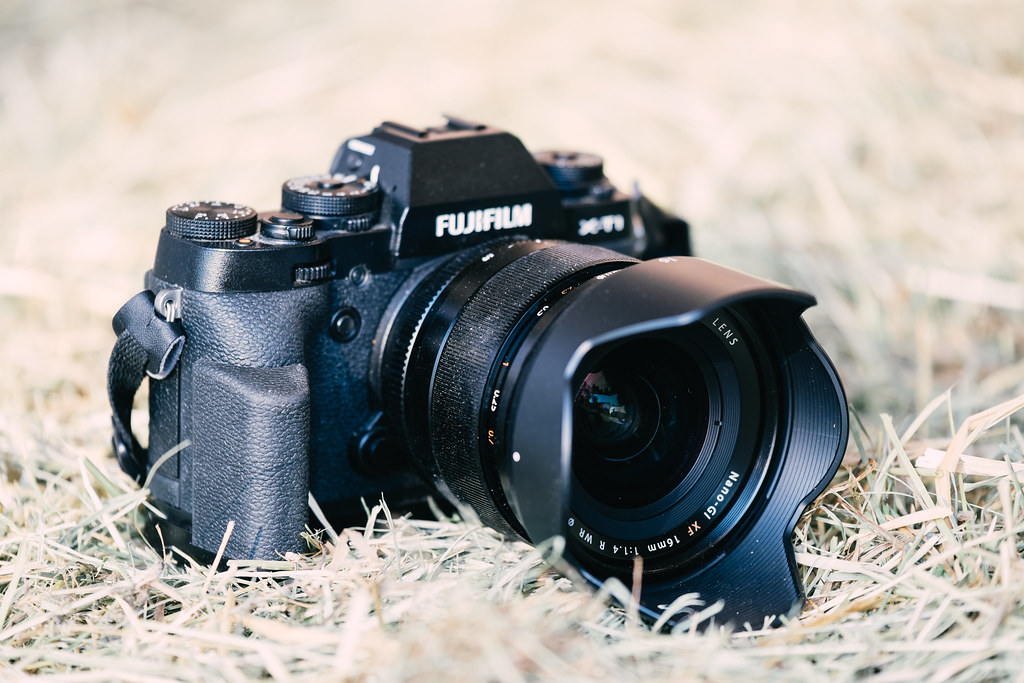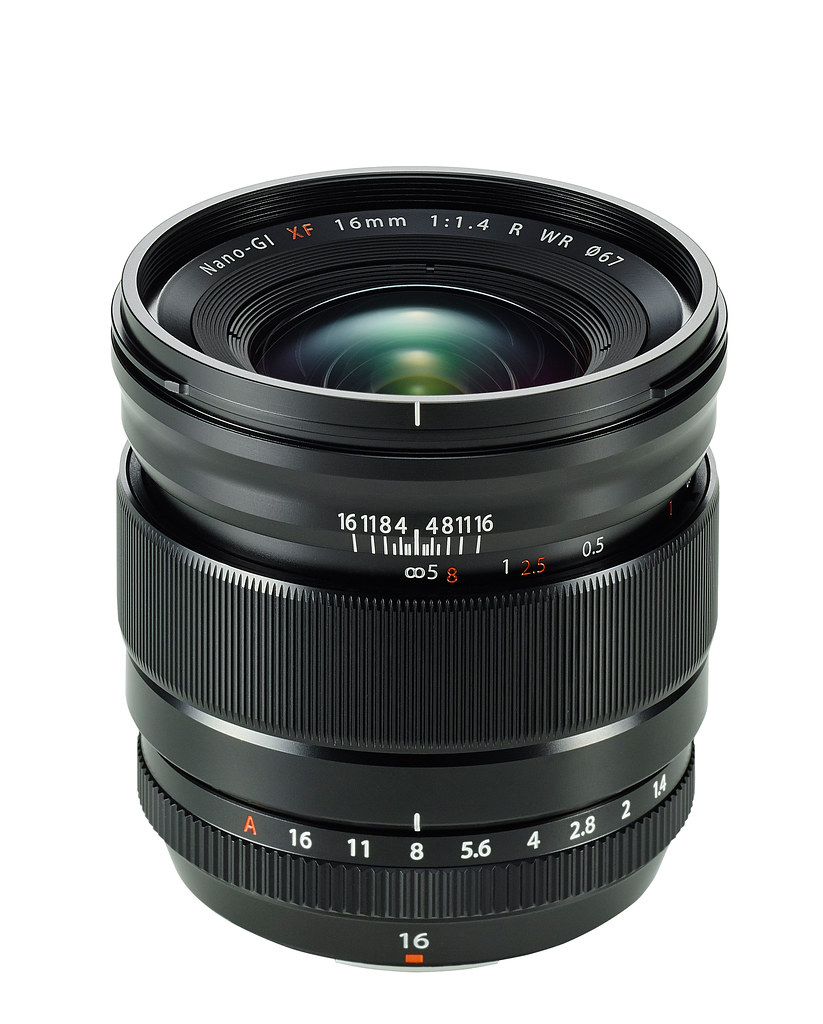First Look: XF16mmF1.4 R WR
First Impressions Review: XF16mmF1.4 R WR
Talk to Rico (open forum for questions & feedback)
Rico’s Books at Rocky Nook – Fuji X Secrets Workshops – Rico’s Flickr Sets
Specs – Rico’s XF16mmF1.4 R WR Sample Images – Deutsche Version
—
^ X-T1 with XF16mmF1.4 R WR
As you might already know, my new book featuring 111 tipps for X-T1 users is now available as an eBook and as a conventionally printed edition. If you are still undecided, click here to download 47 free sample pages. If you like my book and can afford the time, please leave a review at Amazon.
^ X-T1, XF16mmF1.4 R WR, f/1.4, Capture One Pro
Fuji’s latest lens addition has “high-end” written all over it. The XF16mmF1.4 R WR is a fast, weather- and dust-sealed wide-angle prime lens with Nano-GI coating (to eliminate flare and ghosting), a 0.21x magnification close-up capability with a minimum focus distance of only 15 cm (thanks to two floating focus groups) and nine aperture blades for a smooth bokeh with circular blur discs.
^ X-T1, XF16mmF1.4 R WR, f/2.0, SOOC JPEG (Pro Neg. Std)
The lens also features two aspherical elements and two ED (extra low-dispersion) elements that minimize spherical and chromatic aberrations to surprisingly low levels and deliver corner-sharp images even at the widest aperture setting of f/1.4:
^ X-T1, XF16mmF1.4 R WR, f/1.4, SOOC JPEG (Provia)
The XF16mmF1.4 R WR appears to be slightly larger than its XF23mmF1.4 R and XF56mmF1.2 R siblings. The “naked” lens weighs 375 grams, making it little bit lighter than the XF56mmF1.2 R (405 grams), but heavier than the XF23mmF1.4 R (300 grams). Combined with the included plastic lens hood and two protection caps, the XF16mm lens weighs 425 grams.
^ Size Does Matter: XF56mmF1.2 R, XF16mmF1.4 R WR & XF23mmF1.4 R
Come September, Fuji also plans to offer an optional metal lens hood. Click here if you want to see how the prototype looks like.
^ X-T1, XF16mmF1.4 R WR, f/1.4, Lightroom (Classic Chrome)
Like the XF14mmF2.8 R and the XF23mmF1.4 R, the new XF16mmF1.4 R WR uses a clutch mechanism to switch between manual and automatic focus. By pulling the focus ring towards the camera, the lens is set to manual focus, revealing analog distance and depth-of-field (DOF) scales in the process. As usual, the engraved DOF scale is of limited value because its readings differ from the camera’s own electronic DOF scale, which is about two stops more conservative and represents pixel-sharp settings based on the sensor’s pixel pitch.
^ XF16mmF1.4 R WR with manual focus clutch mechanism and engraved analog distance/DOF scale
Sadly, the more accurate electronic DOF scale is disabled when the lens is set to manual focus. To overcome this limitation when you are setting a pixel-sharp hyperfocal distance (or another focusing zone), you can simply use the engraved scale on the lens with an offset of two stops. Example: If you want to set the hyperfocal distance for f/11, use the reading that is engraved for f/5.6 instead.
^ X-T1, XF16mmF1.4 R WR, f/11, Lightroom (Astia), perspective correction
Alternatively, you can use the camera’s AF+MF feature to enable the electronic distance/DOF scale and to manually change the distance according to your hyperfocal needs.
^ X-T1, XF16mmF1.4 R WR, f/16, SOOC JPEG (Velvia)
For example, the hyperfocal distance setting for 16mm and the smallest aperture of f/16 is about 5 meters. However, aperture settings beyond ca. f/9 lead to diffraction blur, an undesired effect that is somewhat counteracted by the camera’s built-in Lens Modulation Optimizer (LMO).
^ X-T1, XF16mmF1.4 R WR, f/16, SOOC JPEG (Monochrome)
Also, lens flare (though extremely well contained) will be more obvious at such extreme aperture settings.
^ X-T1, XF16mmF1.4 R WR, f/5.6, SOOC JPEG (Velvia)
The XF16mmF1.4 R WR is optically corrected for distortion, meaning that no additional digital distortion correction is required during RAW conversion. As usual, chromatic aberration and vignetting are digitally contained based on RAW metadata that is transferred from the lens firmware. To benefit from this, your RAW converter must be able to apply Fujifilm lens correction metadata. Examples of RAW converters that support such metadata are Adobe Lightroom/ACR, Silkypix & RFC EX 2, Capture One Pro, Iridient Developer and (of course) the built-in RAW converter. Examples of RAW converters that ignore lens correction metadata are Photo Ninja, AccuRAW and RPP 64.
^ X-T1, XF16mmF1.4 R WR, f/10, Lightroom, perspective correction
Thanks to its design and optical distortion correction, the lens renders eminently sharp results not only in the center, but also in the corners of an image. This leaves ample headroom for digitally applied perspective corrections that can be useful when shooting architecture.
^ X-T1, XF16mmF1.4 R WR, f/11, Lightroom (Astia), perspective correction
Thanks to the minimum focus distance (MFD) of only 15 cm, you can get close to your subjects. Indeed, the lens offers a magnification 0.21x even without attaching a macro ring.
^ X-T1, XF16mmF1.4 R WR, f/1.4, SOOC JPEG (Astia)
Apart from the limited depth-of-field, it’s perfectly possible to shoot wide open at the minimum focus distance of the lens:
^ X-T1, XF16mmF1.4 R WR, f/1.4, SOOC JPEG (Classic Chrome)
^ X-T1, XF16mmF1.4 R WR, f/1.4, Capture One Pro
The XF16mmF1.4 R WR is well-equipped for reportage and editorial applications that require a good subject/background separation or fast shutter speeds to avoid motion blur when shooting moving subjects:
^ X-T1, XF16mmF1.4 R WR, f/1.4, Lightroom (Astia)
^ X-T1, XF16mmF1.4 R WR, f/1.4, Lightroom
Autofocus performance is perfectly okay when the camera is able to use phase detection autofocus (PDAF), but could be snappier when only contrast-detection autofocus (CDAF) is available.
^ X-T1, XF16mmF1.4 R WR, f/1.4, Lightroom
^ X-T1, XF16mmF1.4 R WR, f/1.4, Lightroom
When you are shooting portraits at wide-open aperture, make sure to use the smallest autofocus frame size, then position the frame over one of the eyes. Alternatively, set the camera to face-detection. Do not focus and reframe.
^ X-T1, XF16mmF1.4 R WR, f/1.4, Lightroom (Astia)
While this is a matter of personal preference (and hence not really open for discussion), I personally like the way the lens is rendering out-of-focus areas and blur.
^ X-T1, XF16mmF1.4 R WR, f/1.4, SOOC JPEG (Astia)
^ X-T1, XF16mmF1.4 R WR, f/1.4, SOOC JPEG (Astia)
To be honest, when I first got my pre-production copy of this lens, I wasn’t quite certain how it would fit into my existing lens lineup. After all, the 16mm focal length is already covered by no less than four different XC and XF zooms. However, the XF16mmF1.4 R WR not only delivers ultimate sharpness near the edges, it also offers close-up and portrait capabilities that I found very useful and attractive.
^ X-T1, XF16mmF1.4 R WR, f/5.6, Lightroom (Classic Chrome), perspective correction
As should be expected in this class, the lens is built in a solid fashion and has a premium feel to it. The aperture ring clicks nicely in 1/3 EV steps, and the focus clutch mechanism adds an analog retro touch.
^ X-T1, XF16mmF1.4 R WR, f/3.6, Lightroom (Classic Chrome)
Please click here if you are interested in browsing through my set of sample shots featuring at least 40 full-size images from Lightroom, Capture One Pro, Iridient Developer and the built-in RAW converter of my X-T1.
^ X-T1, XF16mmF1.4 R WR, f/4.0, Lightroom (Classic Chrome)
Here’s a quick summary of what I particularly like in the XF16mmF1.4 R WR:
- solid dust- and weather-sealed build quality
- optically corrected for distortion
- very sharp at all apertures (even wide-open and in the corners)
- very little chromatic aberration, even at f/1.4
- minimum focus distance of only 15 cm (great for close-ups)
- attraktive bokeh (9 aperture blades)
- flare-resistant thanks to HT-EBC and Nano-GI coating
- compatible with the OVF of the X-Pro1
^ X-T1, XF16mmF1.4 R WR, f/4.0, Lightroom
PRE-ORDER XF 16mmF1.4 WR ($999): USA: BHphoto / AmazonUS / Adorama / EUROPE: WexUK / PCHstore /
For your convenience, here’s a TOC with links to my previous X-PERT CORNER articles:
- Film Simulations in RAW File Converter EX Version 2
- X-T1: Tethering with Adobe Lightroom and Fujifilm HS-V5
- First Look: Fujinon XF16-55mmF2.8 R LM WR
- XF 56mm APD vs. XF 56mm
- New Firmware Features (3): X-T1 Firmware Version 3.00
- New Firmware Features (2): Using Camera Remote
- New Firmware Features (1): Using AF+MF
- First Look: Fujinon XF 50-140mm F2.8 R LM OIS WR
- Using the Fujifilm X100T
- First Look: Fujifilm X30
- First Look: XF18-135mmF3.5-5.6 R LM OIS WR
- X-E2: Behind Firmware 2.00
- First Look: Fujifilm TCL-X100 Teleconverter for X100(S) Cameras
- First Look: Fujinon XF10-24mmF4 R OIS
- First Look: Fujifilm X-T1
- First Look: Fujinon XF56mmF1.2 R
- Exposing Right
- Using Auto-ISO
- Using Face Detection
- First Look: Fujifilm XQ1
- PDAF & LMO Lens Firmware Updates Coming in November
- First Look: Fujifilm X-E2
- How Fuji could save the X-M1
- X-A1 vs. X-M1: Photo Ninja Edition
- X-A1 vs. X-M1: the Shootout
- Using the Fujifilm X-A1 [& X-M1]
- First Look: Fujinon XF23mmF1.4 R
- RAW Converter Shootout Results
- Ultimate RAW Converter Shootout
- First Look: X-M1 with New Kit Zoom and Pancake Lens
- Zeiss Touit vs. Fujinon XF
- Remote Shutter Control for X Series Cameras
- Apple Camera RAW, X-Trans and EXR
- First Look: XF55-200mmF3.5-4.8 R LM OIS
- Studio X
- Using the X100S
- Using the X20
- X100S vs. X100
- X20 vs. X10
- RAW, JPEG, Silkypix and “Fuji Colors”
- Adapting Third-Party Lenses (updated with Speed Booster)
- RAW for JPEG Shooters…
- Tips for Updating your Firmware
- How to Clean the X-Trans Sensor
- Using the XF14mmF2.8 R
- Decoding XF18-55mmF2.8-4 R LM OIS
- Comparing RAW converters: JPEG vs. Lightroom, Capture One, Silkypix & RPP
- XF14mmF2.8 R appears to be almost distortion free
- How to Expand Dynamic Range
- How to Use Extended ISO
- EXR, anyone?
- Capture One – When the Going Gets Tough…
- Using Shooting Profiles and the Quick Menu
Rico Pfirstinger studied communications and has been working as journalist, publicist, and photographer since the mid-80s. He has written a number of books on topics as diverse as Adobe PageMaker and sled dogs, and produced a beautiful book of photographs titled Huskies in Action (German version). He has spent time working as the head of a department with the German Burda-Publishing Company and served as chief editor for a winter sports website. After eight years as a freelance film critic and entertainment writer in Los Angeles, Rico now lives in Germany and devotes his time to digital photography and compact camera systems. His new ebook The Fujifilm X-T1: 111 X-Pert Tips is available at Rocky Nook.




























